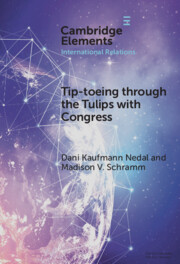Element contents
Tip-toeing through the Tulips with Congress
Published online by Cambridge University Press: 09 January 2025
Summary
Keywords
- Type
- Element
- Information
- Online ISBN: 9781009598019Publisher: Cambridge University PressPrint publication: 30 January 2025
References
- 3
- Cited by

